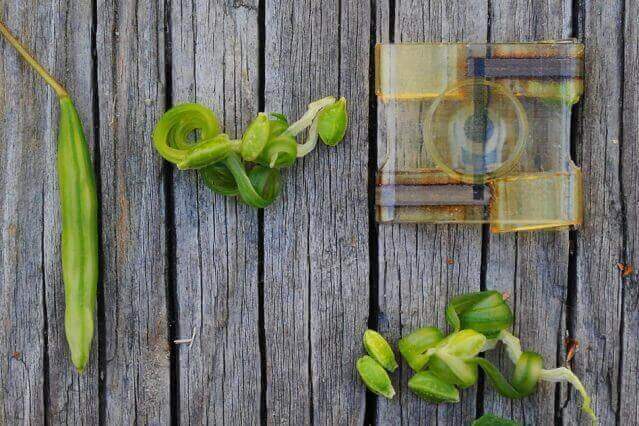MIT researchers develop 3D printable expanding polymer structure that will fold itself up as soon as it’s peeled off the print bed.
When it comes to 3D printing innovation, the prestigious Massachusetts Institute of Technology (MIT) is constantly on the forefront of materials. Researchers have become fond of “4D” objects, which are able to change shape and functionality under certain environmental conditions.
Earlier this year, MIT developed a 3D printed “robot skin” device that mimics the color-changing capabilities of the goldbug beetle. Now, the team is developing a variation of this device. However, this version is able to fold itself without heating or immersion in water.
The new expanding polymer is able to fold itself up as soon as it’s peeled off the print bed. Researchers from MIT’s Computer Science and Artificial Intelligence Laboratory (CSAIL) recently published their findings in the American Chemical Society’s journal Applied Materials and Interfaces.

“Peel-and-Go” Printable Structures Offer Unique Advantages
According to the research team, the primary advantage of this structure is the ability to fold without outside stimulus. When dealing with electronics and other delicate components, external conditions like heat and water can cause damage.
“These materials are often very, very sensitive to moisture and temperature. So if you have these electronics and parts, and you want to initiate folds in them, you wouldn’t want to dunk them in water or heat them, because then your electronics are going to degrade,” explains Subramanian Sundaram, an MIT graduate student and first author on the paper.
To showcase the “peel-and-go” technique, the researchers developed a self-folding device that includes electrical leafs and a polymer “pixel”. This material changes from transparent to opaque when a voltage is applied to it. Upon printing, the structure appears as a “H” shape, but folds in two different directions once it’s pried from the print bed.
The CSAIL team believes that this newly discovered technique could enable the production of electronic components that function depending on their shape. This includes sensors, displays, antennas, and, someday in the near future, printable robots.

Technological Breakthrough Created By Accident
The printer-ink material expands after solidification, an unusual characteristic for this kind of polymer-based material. While printing, the bottom layer adheres to the printer platform, holding the device flat as the layers are deposited. Once the finished device is peeled off the print bed, the joints made from the new material begin to expand. This causes the device’s joints to bend in the opposite direction.
Uniquely enough, the CSAIL researchers actually developed this self-folding structure by accident. While attempting to create a flexible 3D printable ink, the team mistakenly found an ink that expands after hardening.
After realizing the value of this material property, they conjured up a recipe to construct an ink that could be used for expandable joints. The ink itself includes several long molecular chains, and a much shorter chain made up of the monomer isooctyl acrylate.
All in all, the research has groundbreaking implications for the way electronic devices could be produced in the future. By understanding the characteristics of this accidental material, the CSAIL team hopes to design tailored inks for specific applications.
Source: MIT News
License: The text of "“Peel-and-Go” 3D Printable Structures Self-Fold Off the Print Bed" by All3DP is licensed under a Creative Commons Attribution 4.0 International License.